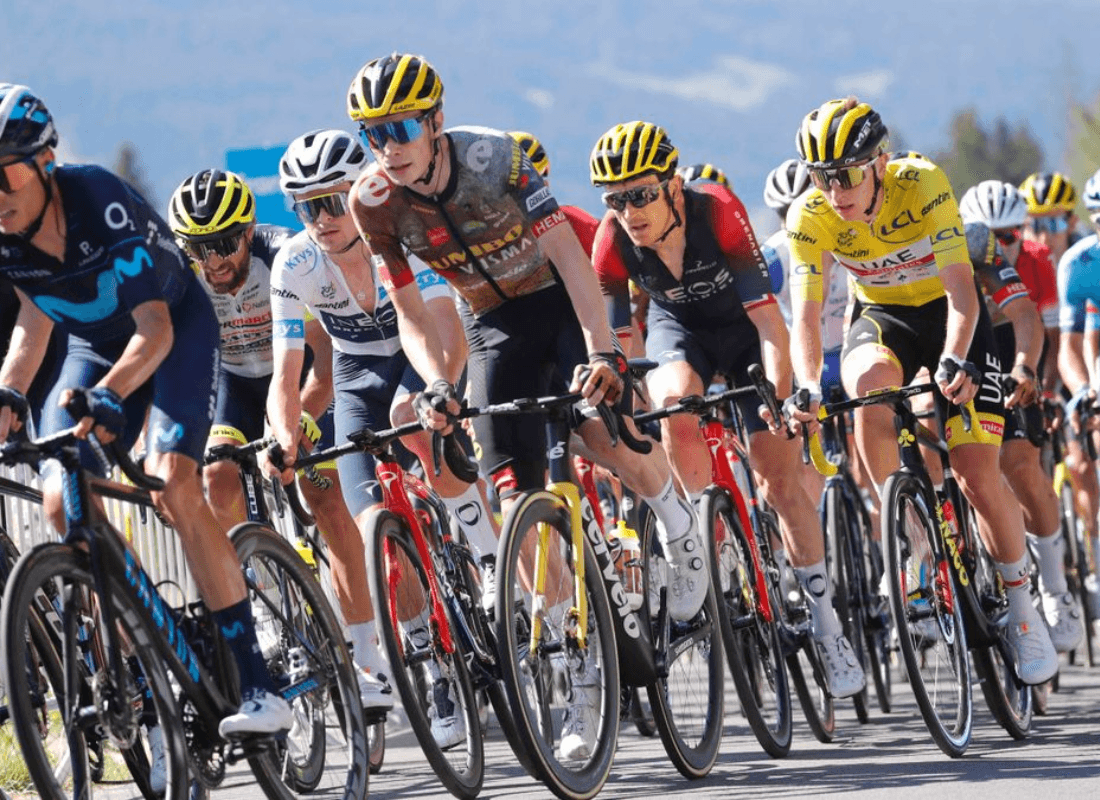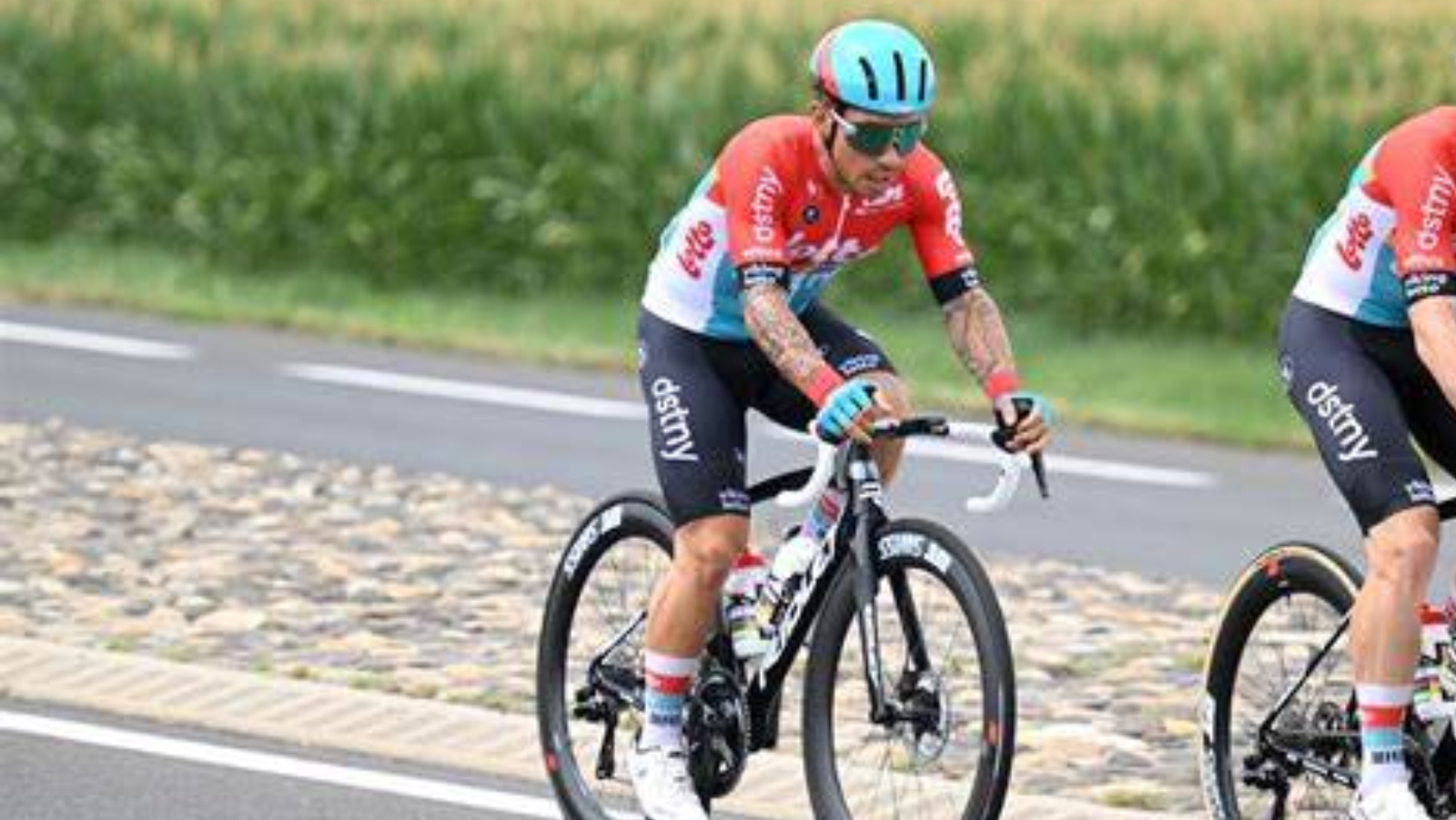ASO, the organizer of the forthcoming Tour de France, has disclosed the race route. It encompasses a daring gravel stage, rigorous Pyrenean sections, three Alpine legs, and concludes with a final time trial up the Col d’Eze, promising three weeks of thrilling competition.
Here’s an overview of the 111th Tour de France:
- Scheduled from June 29 to July 21.
- Spans a total route distance of 3,492 kilometers, traversing Italy, San Marino, Monaco, and France.
- Encompasses 4 stages with uphill finishes.
- Comprises 8 flat stages, 4 hill stages, 7 mountain stages, and 2 individual time trials.
- Includes a challenging gravel stage on the ninth day.
- Integrates 59 kilometers of time trials, a substantial increase compared to the previous Tour.
- Concludes with a demanding final weekend, featuring a mountain stage and a time trial up the Col d’Eze.
The first week of the Tour de France is brimming with thrilling and demanding stages:
- On the fourth day, riders are confronted with the formidable Galibier ascent and a nerve-wracking gravel section.
- The Tour commences in Italy, presenting a challenging start with the inaugural stage in Florence, where riders tackle the Apennines, featuring a remarkable 3,600-meter elevation gain, a record for the opening of a Tour. The stage concludes in Rimini, located 25 kilometers from the summit of the last climb.
- The second day in Italy begins with a tribute to Marco Pantani in Cesenatico, his hometown. The route encompasses hilly terrain, including the Gallisterna and the San Lucca, familiar from the 2020 World Cup in Imola.
- Sprinters have their moment to shine on the third and final Italian stage, and it’s noteworthy that ASO has included three stages surpassing 200 kilometers during this Italian leg.
- Upon entering French territory in the first stage, riders encounter a demanding early challenge with a crossing over the Galibier (Stage 4), reaching an elevation of 2,642 meters, an unprecedented height in the early stages of the Tour.
- Following this early ascent, stages 5 and 6 provide opportunities for sprinters to display their prowess.
- Day 7 introduces the use of time trial bikes with a 25.3-kilometer time trial in Nuits-Saint-Georges, featuring a moderate 1.5-kilometer climb at a 6 percent gradient.
- Before concluding the opening week with a challenging gravel stage, sprinters may have a fourth chance to achieve Tour success on Stage 8.
- Leaders in the classifications may experience a tumultuous Stage 9 in Troyes, which has the potential to disrupt Tour aspirations. This stage is characterized by 14 gravel segments, covering a total of 32 kilometers on unpaved roads, along with an additional 2,000 meters of elevation gain. The final 30 kilometers of the stage feature six of these gravel stretches, setting the stage for an explosive finale.
Gravel, Alpe D’Huez & A Final-Day Time Trial! | Tour De France 2024 Routeshttps://t.co/TWfKxabkvw
— GCN Racing (@GcnRacing) October 25, 2023
👀 #TDF2024 starts in Italy, Galibier stage 4, gravel on stage 9 & a final-day TT in Nice
🤩 #TDFF2024 from Rotterdam to Alpe d’Huez
👇 Which stage are you most excited about? pic.twitter.com/0C7HwO90sl
In the second week of the Tour de France, the following challenges await:
- After a rest day in Orléans, the anticipation heightens as the 10th stage to Saint-Amand-Montrond approaches, where the wind can wield significant influence over the race. This location was witness to a memorable fan spectacle in 2013.
- Stage 11 offers a haven for climbers within the Massif Central, with a course featuring six demanding ascents, including the Puy Mary and the Col du Pertus.
- The mountain stage of the 12th leg spans 211 kilometers and involves a demanding altitude gain of 4,350 meters, concluding in the ski resort of Le Lioran, where Greg Van Avermaet celebrated victory in 2016.
- The 12th stage presents a prime opportunity for escapees with strong climbing abilities.
- The 13th stage concludes in Pau, a traditional sign that the Pyrenees are on the horizon, yet not before a display of sprinting prowess.
- While the Pyrenean menu may be brief, it packs a punch. The 14th stage features three prominent cols, including the iconic Tourmalet, the Hourquette d’Ancizan, and a challenging uphill finish at Pla d’Adet, amounting to a combined altitude gain of 3,900 meters.
- The subsequent day, Stage 15, introduces riders to even more formidable mountain challenges, encompassing the Peyresourde, the Col de Menté, the Portet d’Aspet, the steep Col d’Agnès, and culminating with a finish at the summit of Plateau de Beille. This stage stands as the most demanding in the Tour, boasting an impressive total altitude gain of 4,850 meters.
The third and final week of the Tour de France brings a series of demanding stages:
- Following a well-deserved rest day, the final week begins, and riders in the classification need to stay vigilant from the start, as the formidable Mistral wind can cause chaos in the 16th stage to Nîmes.
- The three-day Alpine journey kicks off with a finish in Superdévoluy (Stage 17), incorporating challenging ascents like the Col Bayard and the Col du Noyer.
- A day later, the Tour moves to Barcelonette (Stage 18), with an eye on the demanding stage that follows.
- The last Alpine stage (Stage 19) presents a substantial challenge, featuring the Col de Vars, the Cime de Bonette (reaching an altitude of 2,802 meters), and a demanding uphill finish in Isola 2000. These colossal mountains rise above 2,000 meters and result in a total elevation gain of 4,600 meters over a 145-kilometer distance.
- The penultimate stage (133 kilometers) commences in Nice and encompasses challenging sections including the Col de Turini and the Col de la Colmiane, well-known from the Paris-Nice race.
- In contrast to previous editions, the final stage isn’t a leisurely procession or criterium through the streets of the French capital. Instead, it features a time trial for the first time since the iconic finish in 1989. This 35-kilometer route extends from Monaco to Nice.
- The concluding stage won’t be a casual ride along the French Riviera but a demanding route that includes La Turbie and the Col d’Eze. A descent guides the riders to the Promenade des Anglais, culminating at Place Masséna. It’s at this moment, after three weeks of competition, that we will determine whether Jonas Vingegaard has secured his third consecutive Tour victory.
Certainly, here’s the overview of the Tour de France 2024 route:
- Stage 1: June 29 – Begins in Florence and concludes in Rimini, spanning 206 kilometers.
- Stage 2: June 30 – Starts in Cesenatico and finishes in Bologna, covering a distance of 200 kilometers.
- Stage 3: July 1 – Runs from Piacenza to Turin, with a route extending over 229 kilometers.
- Stage 4: July 2 – Commences in Pinerolo and ends in Valloire, covering 138 kilometers.
- Stage 5: July 3 – Starts in Saint-Jean-de-Maurienne and concludes in Saint-Vulbas, spanning 177 kilometers.
- Stage 6: July 4 – Begins in Macon and finishes in Dijon, covering 163 kilometers.
- Stage 7: July 5 – Encompasses a 25-kilometer time trial from Nuits-Saint-Georges to Gevrey-Chambertin.
- Stage 8: July 6 – Starts in Semur-en-Auxois and ends in Colombey-les-Deux-Eglises, covering 176 kilometers.
- Stage 9: July 7 – Runs from Troyes to Troyes, with a route extending over 199 kilometers.
- Rest Day: July 8.
- Stage 10: July 9 – Begins in Orleans and concludes in Saint-Amand-Montrond, spanning 187 kilometers.
- Stage 11: July 10 – Starts in Eveaux-les-Bains and ends in Le Lioran, covering 211 kilometers.
- Stage 12: July 11 – Runs from Aurillac to Villeneuve-sur-Lot, with a route extending over 204 kilometers.
- Stage 13: July 12 – Commences in Agen and concludes in Pau, spanning 171 kilometers.
- Stage 14: July 13 – Starts in Pau and concludes in Saint-Lary-Soulan (Pla d’Adet), covering a 152-kilometer route.
- Stage 15: July 14 – Runs from Loudenvielle to Plateau de Beille, with a route extending over 198 kilometers.
- Rest Day: July 15.
- Stage 16: July 16 – Starts in Gruissan and finishes in Nimes, spanning 187 kilometers.
- Stage 17: July 17 – Begins in Saint-Paul-Trois-Châteaux and concludes in Superdévoluy, covering 178 kilometers.
- Stage 18: July 18 – Runs from Gap to Barcelonnette, with a route extending over 179 kilometers.
- Stage 19: July 19 – Commences in Embrun and ends in Isola 2000, covering a 145-kilometer route.
- Stage 20: July 20 – Starts in Nice and concludes at Col de la Couillole, spanning 133 kilometers.
- Stage 21: July 21 – Features a 34-kilometer time trial from Monaco to Nice.
ALSO READ:
- Sha’Carri Richardson now has a track bearing her name
- Gauff’s US Open triumph: defeating Sabalenka in New York
- Ngannou left UFC to fight Tyson Fury in his boxing debut





